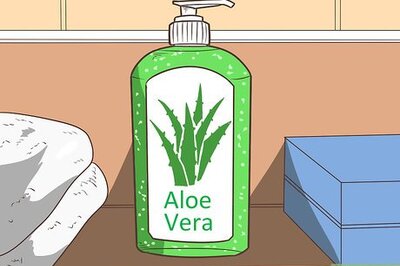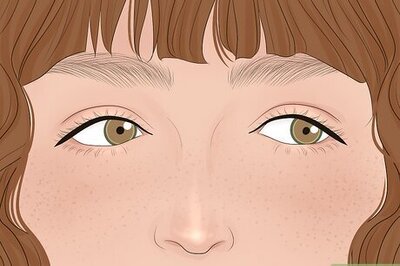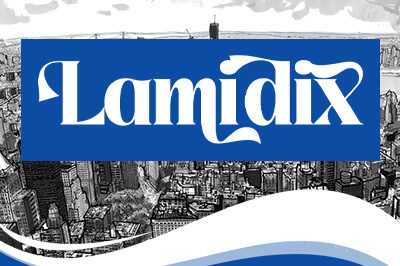
views
What is green light therapy?
Green light therapy uses a specific wavelength of green light to reduce pain. During green light therapy, you’re exposed to a wavelength of green light around 525 to 530 nanometers from green LED lamps or specially tinted glasses. Typically, you’ll sit with the glasses or light on for an hour or two a day (you can do other things that don’t require a screen during your session) to reduce the frequency and intensity of chronic pain from migraines, fibromyalgia, or other injuries and illnesses. To work, green light must enter your eyes (exposing your skin to it will not reduce pain or alleviate stress). Daily green light therapy can manage and reduce the severity of chronic pain over time. Green light can also be used during acute or active pain to manage symptoms during a flare up.
What is green light therapy used for?
To manage pain and light sensitivity from migraines More study is needed to know exactly why, but exposure to green light has a soothing effect on migraine side effects like head pain and oversensitivity to light. Researchers found that green light can reduce headache pain by as much as 20% in some subjects and is less likely to trigger light sensitivity. This is in contrast to other colors of light like red, blue, white, or amber, which were found to make migraine side effects worse. Additionally, regular green light exposure can reduce the frequency of headaches and migraines over time.
To reduce other chronic pain In addition to headaches and migraines, green light may also reduce other physical pain from injuries or illnesses like fibromyalgia. Green light may impact your body’s serotonin levels and endogenous opioid system (a neurochemical system that regulates your mood, stress levels, and pain management), helping you feel less pain and more relaxed.
To lower stress Green light may reduce your overall feelings of stress and anxiety. In one study of dental patients with anxiety about needles, those who wore green-tinted glasses reported significantly less anxiety (and pain) during their appointment. It’s not just effective for humans, though—even plants show better resilience to drought and stress under green light than under red or blue light. Even views of green scenery like forests or parks with trees can make you feel better! In fact, patients recovering from surgery feel better faster when they have a view of the great outdoors.
To improve sleep Green light can help reset your circadian rhythm, or your internal “clock” that tells you when it’s time for bed. Exposure to green light stimulates the production of melatonin, which regulates your sleep-wake cycle and helps you sleep better. Other studies have shown that green light also promotes relaxation and may even help you fall asleep more quickly due to how it interacts with the photopigment melanopsin.
To treat discolored skin spots Green light may calm irritated skin and correct dark circles, sun spots, or other unwanted pigmentations on the skin. According to Xian, “Green LED light therapy helps to fade hyperpigmentation by targeting melanocytes. Think of melanocytes as tiny pigment factories. Their job is to produce melanin, the substance that gives your skin, hair, and eyes their color.”
Is green light therapy really effective for migraines?
Research into how green light treats migraines is very promising. More studies are needed, but so far, green light therapy is a safe and effective way to reduce migraine frequency and intensity without medication. Green light is thought to improve neuroinflammation (a cause of migraine pain and intensity) and reduce sensitivity to light (photophobia), which can cause even worse pain during a migraine. Multiple exciting studies confirm that green light really works for those with migraines: In one study published in Cephalalgia, participants with migraines were exposed to green light every day for 1–2 hours for 10 weeks. Their number of migraine days per month decreased by 60% (and participants reported a better overall quality of life, too). In another study from the Journal of Clinical Neuroscience, participants put on green glasses within 1 hour of a migraine beginning. Compared to the control group (no glasses), those with green light reported significantly decreased pain and light sensitivity after 2 hours. Another recent study from Frontiers in Neurology showed that 61% of migraineurs responded to green light therapy (AKA, their headaches improved at least 50% of the time when using green light). About 42% were “super-responders” (the green light worked in at least 75% of migraines).
How Green Light Therapy Works
Green light changes how your brain processes and feels pain signals. Green light’s journey through your nervous system begins when it hits your retina (a light-sensitive layer of nerves and tissue in the back of the eye). Green light generates a small signal in your retina compared to red and blue light, which generate a large signal and are known to make light sensitivity worse. Then, the signal from your retina travels to the thalamus, which transmits information about light from your eye to the brain’s cortex. Neurons in the thalamus are the least responsive to green light, explaining why migraines start to feel better in green light. The signal from the retina also passes through other parts of the brain and nervous system that control pain, including the endogenous opioid system (a pain relief system within your peripheral nervous system). It’s believed that when green light signals travel through here, they elevate serotonin and dopamine levels, leading to pain relief and a generally happy feeling. In animal studies, green light also produced about 3 times more enkephalins (a natural pain reliever formed in the body) than normal. More research on the neural connection between your eyes and the pain management centers of the brain is needed to know exactly how green light interacts with all levels of your nervous system.
Using Green Light Therapy on Yourself
Consult your doctor before trying green light therapy on your own. Green light therapy isn’t FDA-approved, so it can only be recommended (not prescribed) by a doctor. If you’re considering it, tell your regular doctor—it’s incredibly unlikely to cause any side effects, but there’s always the chance that you may have a rare condition that interacts poorly with green light. Once you get a medical OK, you’re ready to try it!
Place a green light 3-6 feet (0.9-1.8 m) from you in a dark room for 1-2 hours. Look for a green light therapy bulb, LED light, or lamp with a wavelength close to 530 nanometers (+/- 10 nanometers). Then, position it several feet from you in a dark room for at least 1 hour (up to 2 hours). You can read, do chores, or pretty much anything you like—just make sure not to look at a phone, computer, or TV screen that could introduce new colors (and to not fall asleep so your eyes can still take in the green light). You can also choose to use green light therapy glasses instead of lights, although most generic (and cheap) products available to consumers may not filter out the correct wavelengths of green (high-end glasses with the exact right wavelength can be hundreds of dollars). Whether you use lights or glasses is a matter of convenience—as long as green light hits your eyes, the therapy will be effective. When’s the best time to use green light therapy? Many studies instructed participants to use green lights in the evening, but you can try it whenever it works for you or when you’re actively experiencing pain and symptoms from migraines. How often should you use green light therapy? Use it daily to reduce and prevent chronic pain or whenever you have an active migraine.
Find a comfortable light intensity between 4 and 100 lux. One lux is the illumination of one lumen (the unit that measures the brightness of LEDs) over a square meter. Generally, green lights within 4 and 100 lux provide the most benefit—if the light is too dim or bright, it may only cause discomfort without any positive effects. So, adjust the brightness until the green light feels comfortable to you. The strength you choose may be different depending on whether you’re doing preventive therapy or using green light during an active migraine or pain episode.
Green Light Therapy Benefits
The biggest plus of green light therapy is the lack of negative side effects. Since the green light is a normal intensity (not a laser or high-intensity beam), it won’t damage your eyes, cause any neurological side effects, or make your existing pain and symptoms worse. Basically, you’ve got nothing to lose by trying green light therapy! Other benefits include: Simplicity: All you have to do is sit with a green light or glasses for an hour or two. Non-invasiveness: No needles or incisions are required for green light therapy. No drugs: No medication is required for green light therapy, and some studies suggest it may reduce dependence on opioids for pain management. Control: You can choose when and how you use green light from the comfort of home. You can usually do other things like read or do chores as long as you’re not looking at a screen. Low cost: Green light therapy devices are relatively inexpensive, with many lamps and glasses costing under $100.
Other Types of Light Therapy
Red light therapy Red light therapy (RLT) is used cosmetically to treat skin conditions like wrinkles, scars, acne, and redness. During RLT, you’re exposed to low levels of red light that can travel deep into your skin. The light is believed to reduce inflammation and stimulate collagen production, which makes your skin look younger and firmer. Regular treatments at home or in-office are needed to see results, usually in about a month.
Blue light therapy Blue light therapy (BLT) targets the uppermost layers of your skin and is believed to kill the bacteria that causes acne (P. acnes). According to Xian, “Blue light therapy is excellent for acne. I recommend looking for a blue LED that is 465 nanometers because it has a lower risk of increasing hyperpigmentation side effects and can help with wound healing and even Seasonal Affect Disorder.” Blue light therapy may accidentally contribute to aged-looking skin when used too often or at the wrong wavelength.
Red and blue light therapy Xian says, “Using red and blue light therapy is considered the gold standard for treating acne. Red light therapy helps reduce inflammation (since pimples are a form of inflammation) and stimulates collagen production. Blue light therapy targets and kills P. acne bacteria (the bacteria that cause acne) while calming the skin. Together, they create a powerful combination for effective acne treatment.”


















Comments
0 comment